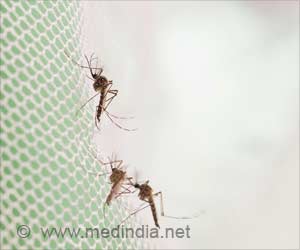Severe drinking water crisis on top of high incidence of a range of diseases including cancer has made life miserable for the poorer sections in the Malwa region of Punjab in northern India.
Malwa is a big chunk of the supposedly prosperous state of Punjab in northern India. But none wants to give their daughter in marriage to Malwa’s young men.
Reason? It is considered almost literally a house of plague.Severe drinking water crisis on top of high incidence of a range of diseases including cancer has made life miserable for the residents of Malwa.
Meeting families who have lost children to cancer is heartbreaking, writes Harjinder Sidhu in a report in the Hindustan Times, a leading English daily.
They borrowed money for treatment; sold their land, ornaments and tractors but, in the end, cancer won. They fetch out old photographs of the son or daughter who is no more and say nothing in the numbness of grief. Debts remain, lives are gone.
Sewak Singh, Gurjiwan Singh and Harjit Singh of Sekhpura village of Bathinda district - they are supposed to be the future support of their poor parents, but they are paralysed, unable to even feed themselves. Not one of the three sons of this family developed normally after birth. Their parents have taken huge loans for their treatment, but in vain. They know that their sons will not live long, yet they still want to try every remedy. What little money the family once had is gone now.
"It is better that my grandchildren should die than endure the hell they are living in now," says their grandmother. There are many more like Sewak, Gurjiwan and Harjit in Shekhpura village and in other Malwa villages.
Advertisement
According to social worker Baljinder Singh Jaurkian (a teacher), who tirelessly work for such patients, about three dozen children below the age of 18 are suffering from congenital disorders in Shekhpura village alone. Similar was the story of Jajjal, Giana and many other villages in Malwa, he said.
Advertisement
Village Jajjal: Jagdev Singh of Jajjal village is 15 years old now. He was a healthy boy till the age of 9, but then he contracted a wasting disease that gradually pushed him into a wheelchair. He cannot speak nor do anything on his own. His father Bholla Singh has done his best, but Jagdev has shown no improvement.
Kartar Kaur (90) lost three sons, one after another, to cancer. She is alone now and prays for release from a life of misery. In 2002, Jajjal village, situated in Malwa's cotton belt, shot to fame and became a headache for the administration in the state. The media brought out the story of a retired government teacher, Jarnail Singh, whose study of his village revealed the abnormally high incidences of cancer deaths in Jajjal and some adjoining villages.
Jajjal is a small village with 500 odd households and a population of about 3,500. Following this expose, several experts and study teams from across the country visited the village in the last five years. Surveys were done; stories appeared in papers on the news channels. But the suffering villagers got nothing. Distrustfully, the villagers when asked about this, say: "We got nothing, except visiting cards of media persons, government officials and doctors!"
Most of the villagers do not want to talk about cancer. Even cancer patients keep a silence about their disease. The code word is "Bikaner". "Going to Bikaner" is self explanatory to the villagers. Their only respite for medical support is the cancer treatment facilities at Bikaner. But most people, who suspect that they may have cancer, fear to go for a medical check-up. The huge cost of treatment and the worried faces of their family members deter many from even going for an early diagnosis of the disease.
The ruling coalition had promised a cancer hospital in the Malwa region during their election campaign, but there is no sign of it. Anyway, a hospital is no solution to the crisis. Cancer is merely one symptom of environmental degradation and presence of toxic substances in the environment and food chain. Politicians and experts from universities remain silent about what has happened to the environment to cause this epidemic.
Before the elections in February, Manpreet Singh Badal (now Finance Minister) had prepared a list of 300 cancer deaths from his Giddarbaha constituency alone. "My worry is the cancer that has caused several deaths in the area. Polluted drinking water is said to be one of the main reasons for cancer in the cotton belt," he said then, promising: "If my party forms the government, my priority will be to provide quality drinking water to people. Water works based on new technology will have to be installed to provide quality water to people."
The villages are, however, still waiting for uncontaminated water.
Another facet of the looming crisis - the school-going girls of Kotbhai village of Muktsar district have started colouring their grey hair at the age of 13.
This isn't an isolated example. Sumandeep Kaur, Ramandeep Kaur and Kirandeep of Government Senior Secondary School can count many grey hairs and there are still more students in other schools of the district, especially in Gidderbaha block, who need to colour their prematurely grey hair.
What has caused this affliction? And not just that. Many students are suffering from pain in the joints and at least seven students in Class VI of Kotbhai Government School will raise their hands. Some complain of backache and others say its joint pain, especially in the knee. "I went to a doctor several times but no medicine helps so I have just stopped taking them. Now, it has been more than a year and I just put up with this backache; it never goes away," says 12-year-old Gurpreet Singh of this school.
A Class VI student of Bhuttiwala village, Gagandeep Kaur finds it hard to sit through a period as she is suffering from a severe backache for the past 18 months. What's more, she is not the only one — 13 other students in the same school suffer from joint pain and backache.
"Unavailability of safe drinking water and pesticides in vegetables, pulses and wheat are probable reasons that leave the immunization system vulnerable," says orthopaedic surgeon Dr Arun Jain.
"As a result, the elasticity of joints gets affected and even children suffer from arthritis and skeletal fluorosis," Dr Jain explained, adding that he had treated a seven-year-old girl suffering from arthritis.
Apart from this, the ecological problems, like the alarming depletion in the watertable, waterlogging, soil salinity, toxicity and micronutrient deficiency are posing a big challenge. The water crisis is fast deepening in Malwa as there is no water for irrigation neither for drinking in many villages.
Potable water has become a saleable commodity in Malwa villages. Subsoil water in most places is too saline or contaminated with residues of deadly aldrin, chlordane, DDT, dieldrin, endrin and heptachlor. The water in the canals is black and stinking; it flows over the fields carrying such heavy doses of organophosphates that it is unfit for irrigation. In districts of Faridkot, Muktsar, Bathinda and Abohar-Fazilka many municipal committees were forced to stop supplying tap water.
Untreated industrial waste released into drains is seeping into the soil and polluting the groundwater. Several towns are witnessing this problem. People living alongside drains in Punjab are fast becoming vulnerable to even DNA damage. Dr J S Thakur of PGI, Chandigarh, who is working on this issue, admits that water contaminated by untreated industrial waste might be leading to cancer and other congenital diseases.
Time and again, the lack of clean safe water has been brought to the attention of present Punjab Chief Minister Parkash Singh Badal and his predecessor Captain Amarinder Singh. Nothing has been done so far.
Punjab Kheti Virasat Mission, an NGO active in Malwa, is working to educate the farmers about health and environment issues, even to the extent of asking them to pledge that they will forego chemical pesticides and fertilizers in favour of organic farming. PKVM executive director Umendra Dutt asks: "How should civil society respond when the government turns a blind eye, when the Health Department doesn't even have a plan to tackle this issue? The environmental crisis is fast deepening but the state Health Department along with some scientists of Punjab Agricultural University are bent on denying and denying and denying."
"It has been more than a year since a study revealed indiscriminate use of pesticides as one of the possible causes of spurt in cancer cases, but the government has not yet implemented its recommendations," boils Dutt.
Most households report some health problem or other. Common among them are heart ailments, paralysis, skin problems, asthma and arthritis. These health problems, many related to environmental contamination have become common enough for the villagers to accept them as their fate.
The writing on the wall is clear: Punjab is in the middle of a multi-dimensional eco-disaster which is showing up in the form of unprecedented epidemic of deadly disease. Remedial steps are urgently needed, but who cares, agonises Harjinder Sidhu in a report in the Hindustan Times, a leading English daily.
Source-Medindia
SRM/J










